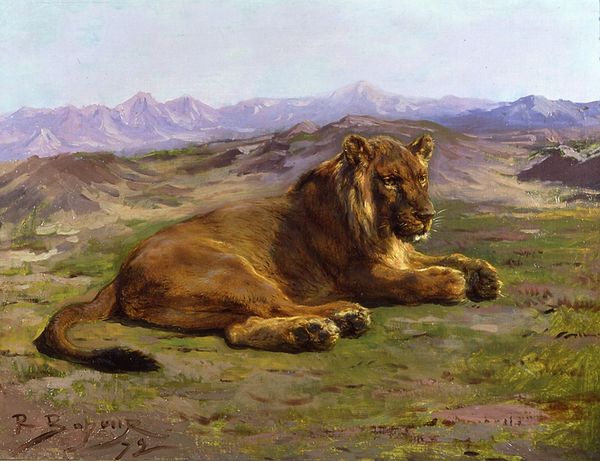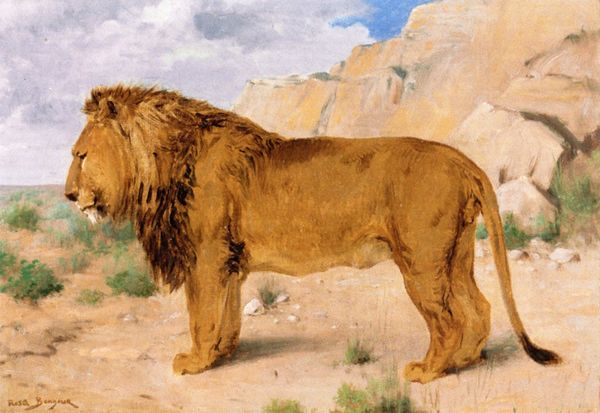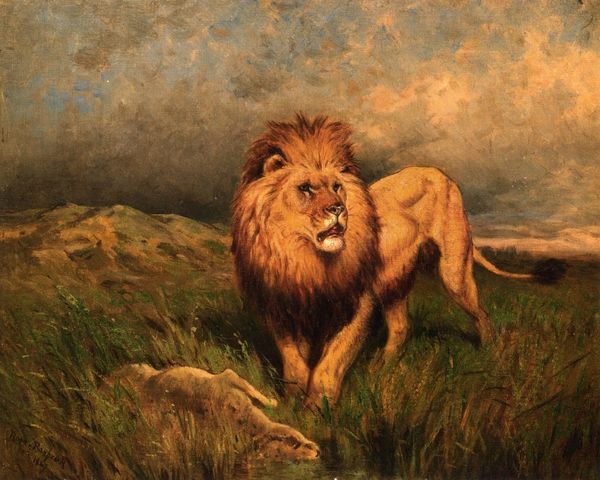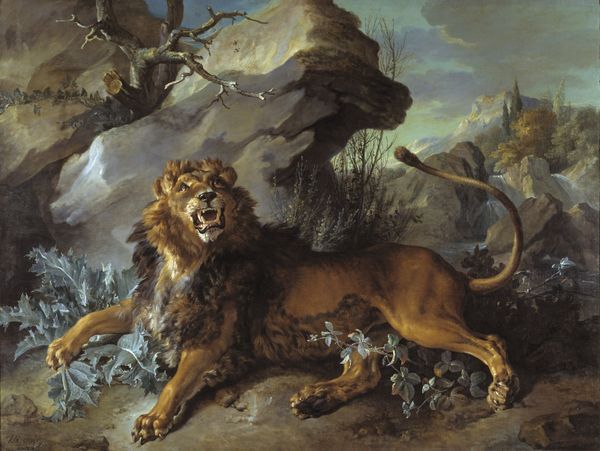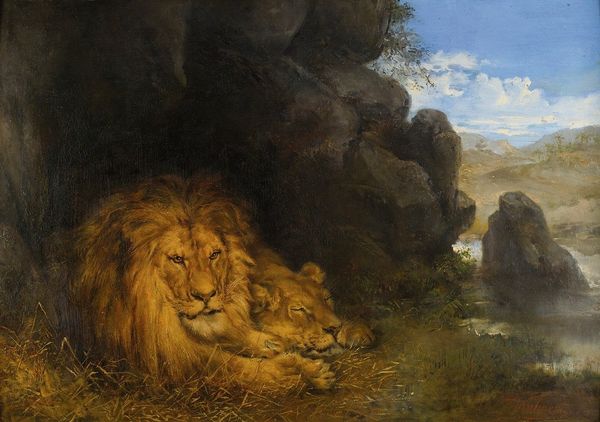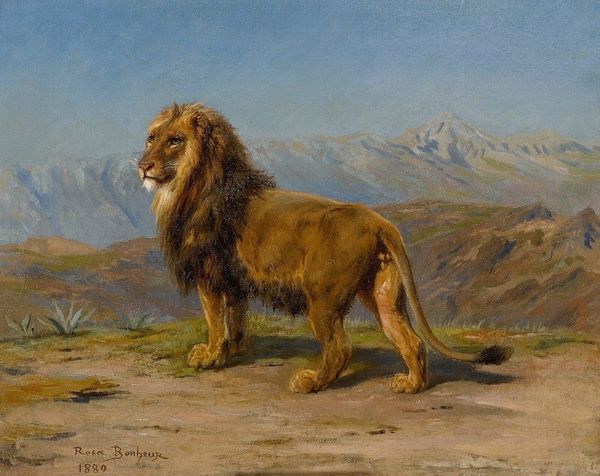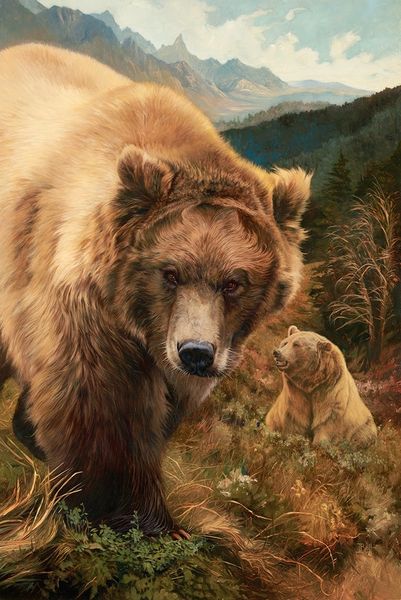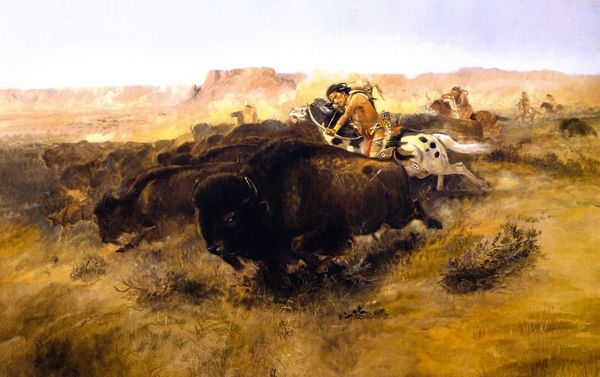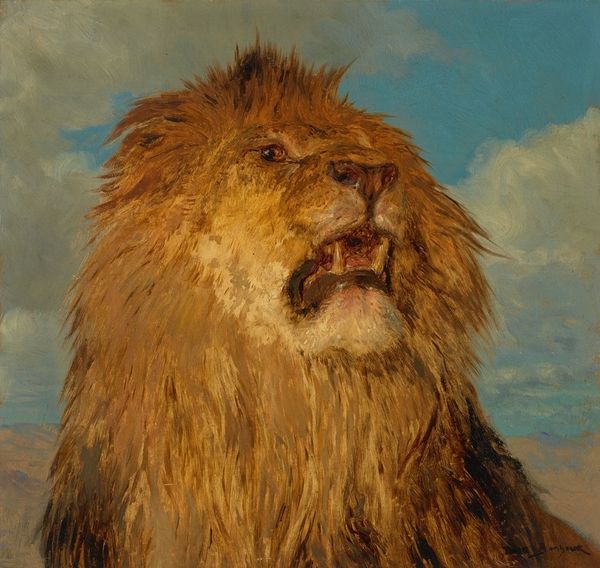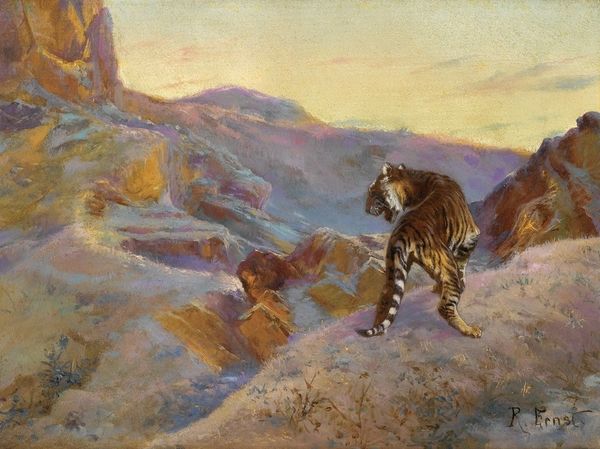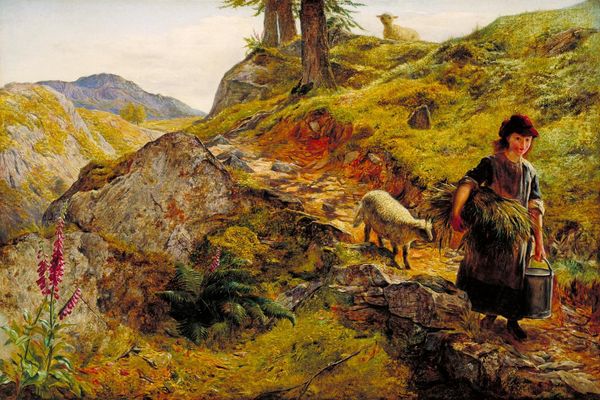
painting, oil-paint
#
animal
#
painting
#
oil-paint
#
landscape
#
oil painting
#
animal portrait
#
orientalism
#
genre-painting
#
realism
Copyright: Public Domain: Artvee
Editor: Here we see Jean-Léon Gérôme’s "Lion on the Watch," an oil painting from around 1885. The way the lion is positioned, so alert on the rocks, gives it a feeling of both power and loneliness. What strikes you most about the formal qualities of the composition? Curator: Indeed. The work’s strength lies primarily in its meticulous realism and careful arrangement of forms. Observe how Gérôme uses the diagonal thrust of the rocks to guide our eye towards the horizon. The limited color palette—primarily earth tones offset by the azure sky—creates a sense of arid desolation. Note the precise brushwork; Gérôme clearly aimed to capture the tactile quality of the lion's fur and the rough texture of the rocks. What effect do you think these choices have? Editor: It feels very academic, in a way. The clarity of the textures and the almost photographic detail make it a powerful image, but the subdued colors keep it from being overly dramatic. The lion, despite being the subject, almost blends into the rocks. Do you think there's a tension between the detail and the overall effect of stillness? Curator: Precisely. The stillness is not merely a visual attribute but, perhaps, a structural element. It allows for intense scrutiny of form and surface. The lion isn't actively hunting or engaged in a dynamic activity; it's posed, observed. Do you see how this static quality redirects our attention from narrative towards pure form and the interplay of light and shadow? Editor: I do see it now. By minimizing the action, Gérôme emphasizes the pure visual experience of the lion's form against the landscape. Thanks for pointing out the importance of the static nature of the scene in bringing out this effect. Curator: A close analysis of the structural choices really brings to light the power and impact of the art. It has been my pleasure.
Comments
No comments
Be the first to comment and join the conversation on the ultimate creative platform.
